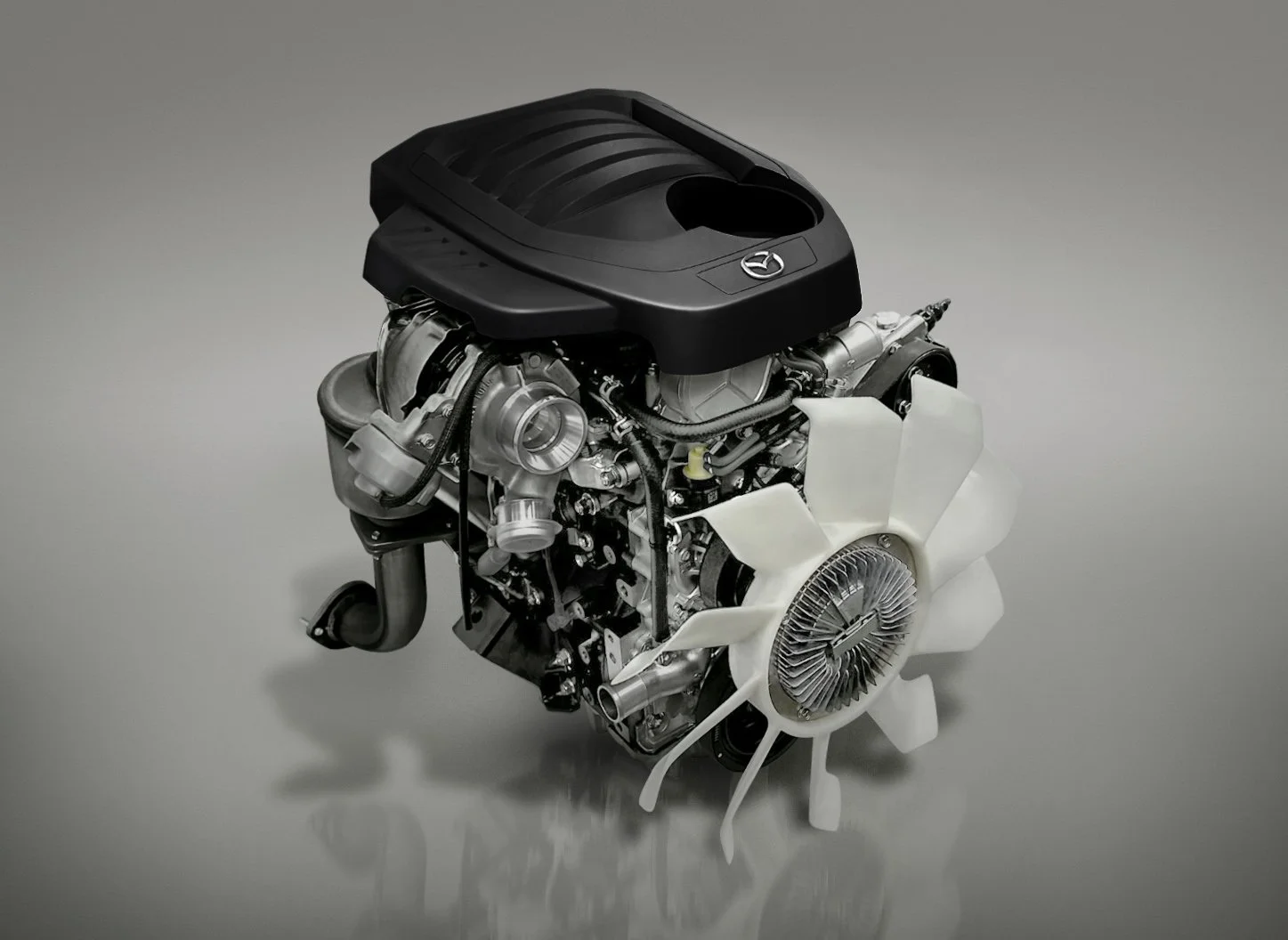BT-50 adds rear-drive, with smaller engine
/Optional 1.9 carries lighter Clean Car penalty and brings down price but also ties to rear-drive and knocks 500kg off towing capability.
INTRODUCTION of a 1.9-litre turbo-diesel engine to the BT-50 line-up as an alternate to the mainstay 3.0-litre enables Mazda to claim it as the cleanest in class – though it’s still in the penalty zone.
The new engine restricts to a rear-drive format that’s also a new choice for BT-50 consideration.
In this guise BT-50 becomes the lowest CO2-emitting diesel-powered dual-cab ute in the category, with 205 grams of CO2 per kilometre cited.
That places it markedly ahead of the alternate 3.0-litre, also four-cylinder and closely relsted in technical design, which creates 238g/km.
Under Clean Car, vehicles that emit more than 196g/k attract a fine; nonetheless with the new engine that hit reduces to $1093 atop the recommended retail, whereas the 3.0-litre attracts a $2530 fee.
In respect to spend, the 1.9-litre editions – a GSX and a GTX – of course bring down admission price into a dual-cab Mazda, with the first at $48,740 and the more expansively specced alternate $4000 more. The cheapest 3.0-litre BT-50 dual cab is a GSX wellside at $57,290, though as with the three more expensive versions it is four-wheel-drive.
Like the larger capacity unit, the new one is Euro 5 complaint and has double-overhead camshafts, four valves per cylinder and common-rail injection.
The 1.9-litre turbocharged four-cylinder generates 110kW and 350Nm of torque, so gives away 30kW and 100Nm. To compensate, the 1.9-litre has a shorter (lower) final-drive ratio in the differentials with 4.1:1 compared with the 3.0-litre’s 3.727:1.
The six forward ratios in the six-speed automatic remain the same in either version with both fifth and sixth gears being over-drive ratios for greater fuel economy; 7.8 litres per 100kmh, against 9.2. Those results are gauged to WLTP-3; the old, outmoded NEDC measurement lends eben more flattering measurement.
While the 3.0-litre BT-50 is rated to tow a braked trailer of up to 3500kg,, the 1.9 tops out at 3000kg, but both have unbraked maximums of 750kg and towball download maximums of 350kg also apply.
Maximum payload also increases to 1150kg on the two-wheel drive GSX and 1130kg on the two-wheel drive GTX; the four-wheel-drives are between 1065 to 1085.
The rear drive variants have also been given upgraded suspension to improve ride quality when unladen. Kerb weights reduce from 2015/2035kg to 1850-1870kg.
Trim detail for the rear-drive editions seems to match that as ror the like-badsed four-wheel-drives. Other additions for the BT-50 lineup include a new tyre pressuring monitoring system (TPMS) on the GTX, Limited and Takami variants.
The 1.9-litre has been available in Australia for more than a year and when asked about it this time in 2022, Mazda NZ expressed disinterest.
However, the impetus for distributors to pay attention to emissions has intensified since.
On top of the Clean Car Discount (CCD), aka ute tax that has targeted consumers for the past year there is the Clean Car Standard, which direct hits the industry. It also works off C02 emissions, of which vehicle importers are expected to meet targets with each vehicle that is registered.
High emitting vehicles are able to be offset by lower emitting vehicles, but if the limit is breached, fines are issued. Along the same lines, if an importer is under the limit, credits will be issued, which can be traded.
Electric cars become ace cards under this, but even though Mazda has one, its CO2 average is relatively high, according to monthly data shared by Waka Kotahi.
In commenting about the 1.9-litre, David Hodge, Mazda NZ managing director, said he believed customers will “welcome the low CO2 output and economical nature of this new 1.9L powertrain as well as the considerably lower CCD fee. We believe that these factors are becoming a more important consideration for buyers.”
All BT-50 models have a 5-Star ANCAP Safety Rating (2022 tested) and feature a total of eight air bags including a driver’s knee and a driver’s far-side air bag.


















